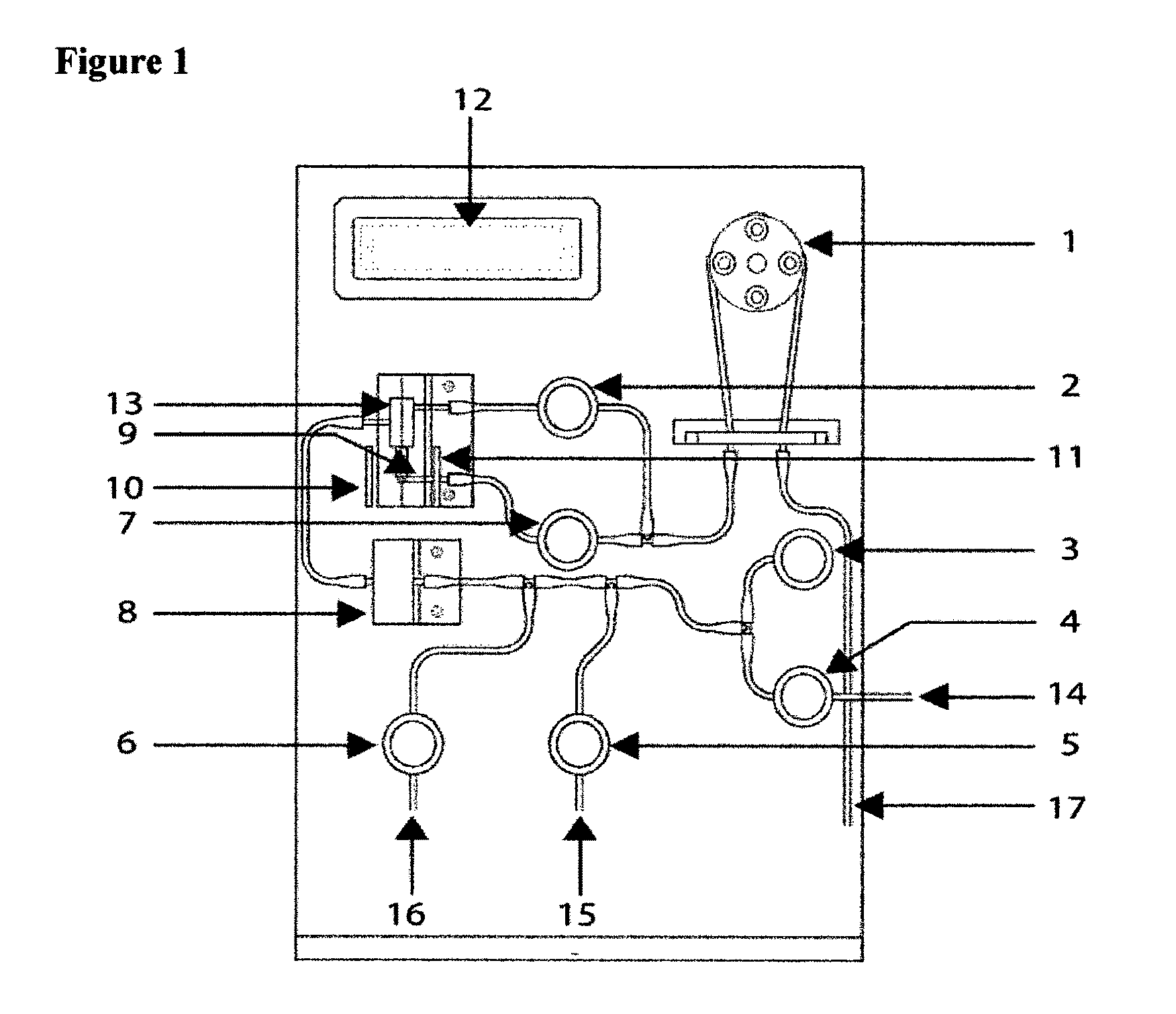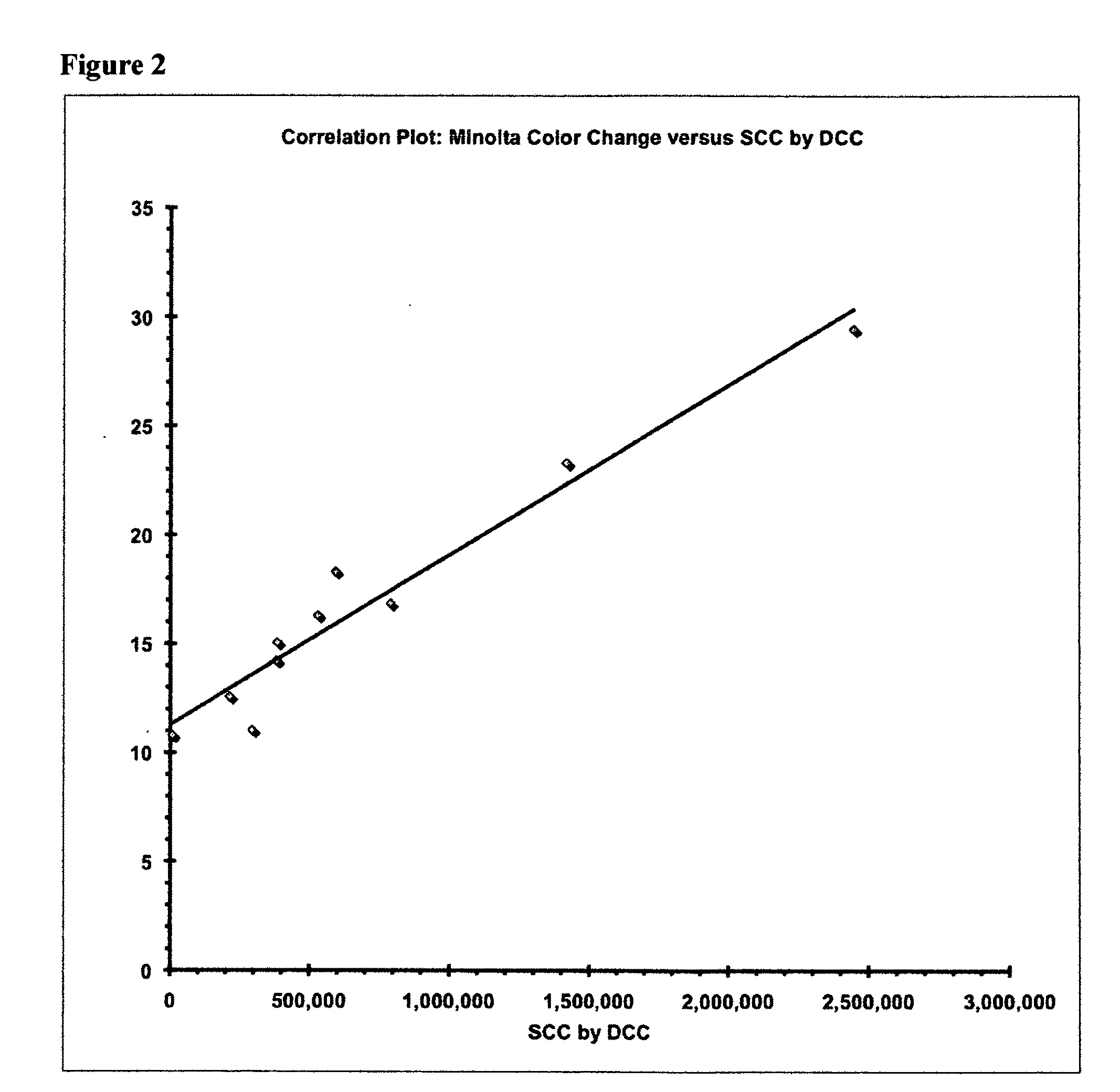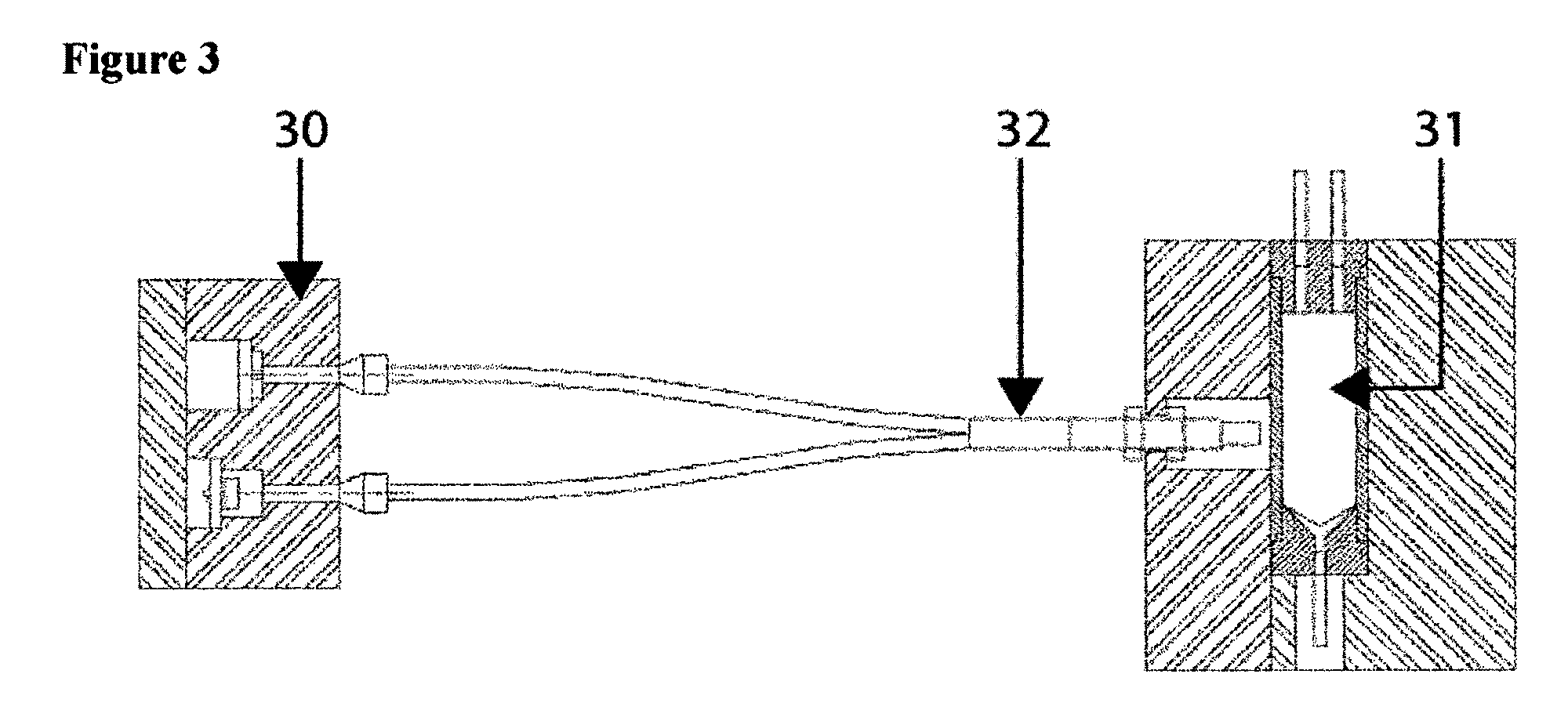Colorimetric determination of somatic cell count in milk
a somatic cell and colorimetric technology, applied in the field of colorimetric determination of somatic cell count in milk, can solve the problems of reducing milk quality, affecting the quality of milk, and affecting the economic benefits of dairy industry,
- Summary
- Abstract
- Description
- Claims
- Application Information
AI Technical Summary
Benefits of technology
Problems solved by technology
Method used
Image
Examples
example 1
Liquid Reagents for SCC Determination
[0022]The reagent components of the invention consist of the following formulation:
[0023]Reagent 1: Taxolin, 10 mg / mL of isopropanol
[0024]Reagent 2: Tris buffer, 1 molar, pH 9.8 at 24° C.; Triton X-100, 15 mg / mL of buffer
Ten fresh milk samples were collected for this study. One hundred microliters of the reagent is mixed with 100 μL of fresh milk sample, and the color changes measured by a Minolta CR-321 calorimeter in Hunter's units in 180 seconds were plotted against the Deleval's Direct cell counter (DCC) method. The data is summarized in Table 1, and the correlation shown in FIG. 2.
TABLE 1Correlation of the Present In-Line method versus DCCMinoltaColorSampleSCC by DCCChange17,00010.82214,00012.573382,00014.224530,00016.351,417,00023.36385,00015.057790,00016.8582,445,00029.45959300018.3110295,00011.03
example 2
In-Line SCC Determination
[0025]The milk sample from the milking line is introduced to the in-line instrument flow cell by a pump or pumps and a series of valves, where it is mixed with the reagents. After a fixed incubation period, the color intensity is read in a reflectance mode.
[0026]The schematic of the in-line instrument is shown in FIG. 1.[0027]1. Fluidic controls—The instrument design has one peristaltic pump [FIG. 1:1], and six valves controlling sample and reagents measurements [FIG. 1:2-7], mixing, and washing steps required in the assay protocol. The peristaltic pump was selected over direct drive pump because of the proven reliability and low cost. However, a step counter was added to ensure accurate measurements of liquid volumes. The number of valves can be reduced to three, but using six valves will simplify the design of the sequencing. Optionally, three or more pumps can also be used for the system to simplify the fluidic system. The instrument also contains a reage...
PUM
| Property | Measurement | Unit |
|---|---|---|
| wavelength | aaaaa | aaaaa |
| path length | aaaaa | aaaaa |
| angle of | aaaaa | aaaaa |
Abstract
Description
Claims
Application Information
 Login to View More
Login to View More - R&D
- Intellectual Property
- Life Sciences
- Materials
- Tech Scout
- Unparalleled Data Quality
- Higher Quality Content
- 60% Fewer Hallucinations
Browse by: Latest US Patents, China's latest patents, Technical Efficacy Thesaurus, Application Domain, Technology Topic, Popular Technical Reports.
© 2025 PatSnap. All rights reserved.Legal|Privacy policy|Modern Slavery Act Transparency Statement|Sitemap|About US| Contact US: help@patsnap.com



